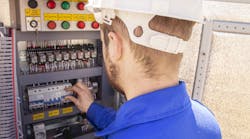One philosophy holds that maintenance of new equipment can be deferred for a year or two rather than performed per the manufacturer’s schedule. The idea is to save money. People with this philosophy believe further cost savings can be achieved by deferring the testing and maintenance of electrical infrastructure components such as cables and circuit breakers.
After all, the equipment was acceptance-tested and there’s a warranty. It’s new, so it (allegedly) has no defects. Indeed, the initial financial data appear to validate this philosophy. But the total ownership cost is significantly higher while the reliability is significantly lower. If the intention is to use the equipment and infrastructure for more than a few months, this philosophy is dead wrong.
A case can be made that this philosophy is incorrect if you intend to turn the equipment on at all. A question that should always be asked when choosing whether to defer is, “Do I really want to operate blindly for a year, not knowing the actual condition of my equipment and infrastructure once it’s energized?”
The consequences of a maintenance failure may range from missed production that causes the loss of a key customer to an explosion that kills people. Considering the risk, the correct answer to the question should be obvious.
For best results, maintenance of equipment starts before the equipment arrives on-site to be installed. Some tasks that are best handled in that timeframe include:
- Creation of asset number and entry of equipment into the CMMS.
- Identification of the recommended maintenance (all inspections, measurements, adjustments, and similar tasks).
- Scheduling of the recommended maintenance per manufacturer’s guidelines.
- Assessment of resources such as training and equipment to perform the recommended maintenance.
- Assignment of resources needed to perform the recommended maintenance.
- Acquisition of missing resources, whether by outsourcing or purchasing for in-house needs.
- Performance of the recommended maintenance as part of start-up so that baseline data is obtained.
It’s a little different with, say feeder cables. You might not need to do all the steps needed for equipment. But you certainly should do that start-up maintenance so you have baseline data. This is the closest you get to being able to quantify the normal condition of the equipment. When the next scheduled PM is performed, you’ll have another set of data. You can compare the two to see what has changed. And the third time, you can plot a trend.
With a test such as insulation resistance testing, trending is what gives the test its failure prevention superpower. This same test, performed only once, isn’t particularly helpful except in extreme cases. Waiting a year to perform the first test in the trend means you’re counting on luck rather than data. Many other tests gain failure prevention superpowers through comparison to the baseline; thermography is a good example.
The “defer it to save money” philosophy is based on the idea that maintenance is a cost that is best avoided. And it delivers failure for that reason. To save money beyond the immediate moment, you must treat maintenance as an integral part of purchasing and operating the equipment (and the electrical infrastructure that supports it).




